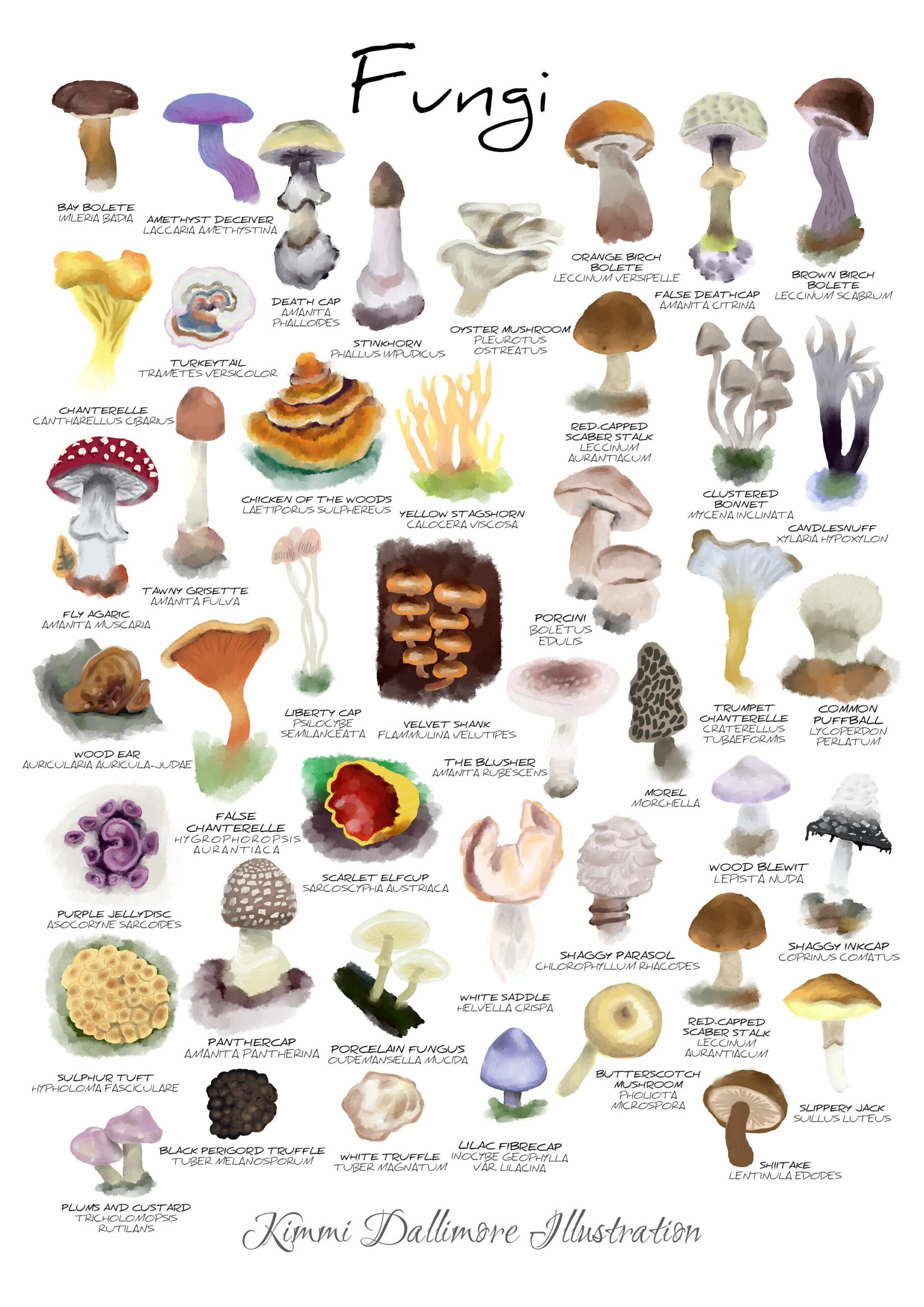Fungi occupy a significant and multifaceted niche within the biosphere. While most are microscopic and elusive, the presence of macroscopic fungi—those visible to the naked eye—offers a kaleidoscopic array of shapes, colors, and textures that invite scrutiny and appreciation. The art of identifying these organisms in their natural habitats not only enriches our understanding of biodiversity but also fosters a profound connection with the environment. This article endeavors to delve into the methodologies one might employ to identify various types of fungi encountered in nature, emphasizing the potential for a transformative shift in perspective and curiosity.
Understanding the Role of Fungi in Ecosystems
The ecological importance of fungi cannot be overstated. These organisms act as vital decomposers, breaking down organic matter and recycling nutrients back into the ecosystem. They form symbiotic relationships with plants through mycorrhizae, enhancing nutrient absorption for the host plant while receiving carbohydrates in return. Additionally, fungi serve as food sources for many organisms, contributing richly to food webs.
To embark on the journey of identifying fungi, one must first grasp the basic classification of these organisms. Fungi are categorized into various groups, including ascomycetes (sac fungi), basidiomycetes (club fungi), zygomycetes, and glomeromycetes, among others. Each group exhibits unique reproductive strategies and morphological characteristics, which are foundational to identification processes.
Equipment and Techniques for Effective Observation
A careful and systematic approach is requisite when identifying fungi in the field. Essential tools may include a field guide tailored to local fungi, a magnifying glass for close inspection, a digital camera for documentation, and perhaps a spore print kit for more detailed identification. The latter entails placing a mushroom cap gill-side down on a piece of paper for several hours to reveal a spore pattern, a critical aspect of many definitive guides.
Moreover, the use of a field notebook is invaluable. Jotting down observations related to the habitat, substrate, climate, and color of the fungi extends beyond mere documentation; it enables a holistic appraisal of the organism’s ecological niche. Photographs from various angles, careful notes on size, shape, and coloration serve as a future reference and facilitate correlation with field guides.
Environmental Considerations in Fungi Identification
The environment plays a pivotal role in determining fungi species and can be a source of valuable clues. Fungi thrive in myriad substrates; one may find certain species adorning rotting wood, while others proliferate in soil or decaying leaf litter. Identifying the substrate upon which a fungal specimen arises can narrow down potential matches in field guides. Seasonal variations also impact fungi, as many species are ephemeral, appearing during specific times of the year. An understanding of habitats such as forests, grasslands, and wetlands further contextualizes where particular fungi might be prevalent.
Additionally, the climate will influence both the morphology and ecological interactions involving fungi. In temperate regions, fungi are often characterized as seasonal indicators, emerging during damp and cool conditions of spring or autumn. On the contrary, tropical fungi might exhibit year-round growth but display distinct characteristics due to unique climatic conditions. Gathering environmental data while observing fungi thus enriches the identification process.
Deciphering the Intricacies of Morphology
Once the practical groundwork has been laid, one can focus on the detailed examination of morphology, which lies at the heart of fungal identification. The shape of the fruiting body—commonly known as the mushroom—varies widely and serves as a primary identifier. Familiar forms include caps, brackets, puffballs, and lichens, each displaying a unique silhouette and structure.
Examining the gill structure is particularly intriguing. Fungi can have gills, pores, or teeth beneath the cap, each offering distinctive identification cues. While gills might be free, attached, or descending, pore fungi (like boletes) present a spongier texture beneath their caps. Furthermore, the color of gills can change with maturity, providing an additional layer of complexity to observations.
The surface texture of the cap—whether smooth, scaly, or wrinkled—also merits attention. Furthermore, the coloration can vary; some species exhibit vibrant hues, while others appear more muted or even change color as they age. Understanding how these traits interlink with their environmental context can yield invaluable insights into the species in question.
Mycorrhizal Relationships and Fungal Identification
In addition to direct morphological characteristics, the ecological relationships fungi engage in can also serve as identifiers. Mycorrhizal fungi, for example, engage in symbiosis with plant roots, and identifying the host plant can guide one towards correctly identifying the associated fungus. Identifying a fungus while noting the plant community around it can create a fascinating narrative between the two organisms, enriching our understanding of their coexistence.
Contrastingly, some fungi are saprophytes, thriving on decaying organic material. Observing the substrate and environmental conditions in tandem with fungal characteristics can elucidate their role in the ecosystem and assist in classification. Identifying fungi above and below the ground entails a comprehensive understanding of interrelations, facilitating a deeper comprehension of ecological dynamics.
Microbial Interactions and Advanced Techniques
The convergence of fungi with bacteria, algae, and other microbes further complicates identification. Fungi often exist within complex microbial communities, leading to ‘neighborhood effects’ that can influence their morphology and survival. Advanced techniques such as molecular biology, including DNA sequencing, offer avenues for nuanced identification. However, these methods necessitate equipment and training that may not be readily accessible to amateur mycologists. In particular, newer techniques enable the identification of cryptic species—those distinguisable only at a genetic level—an area that is flourishing within the field.
Conclusion: Fostering Appreciation Through Identification
In summary, the identification of fungi in nature is not merely an academic pursuit but an adventure filled with awe and discovery. Through an understanding of morphology, ecological interactions, and environmental factors, individuals can cultivate a greater appreciation for these often-overlooked organisms. As curiosity piques and knowledge deepens, the experience of engaging with nature transforms. The fungi that once seemed mysterious and alien become familiar companions in the ecosystem, enriching the tapestry of life around us—a testament to the hidden intricacies of our world.
